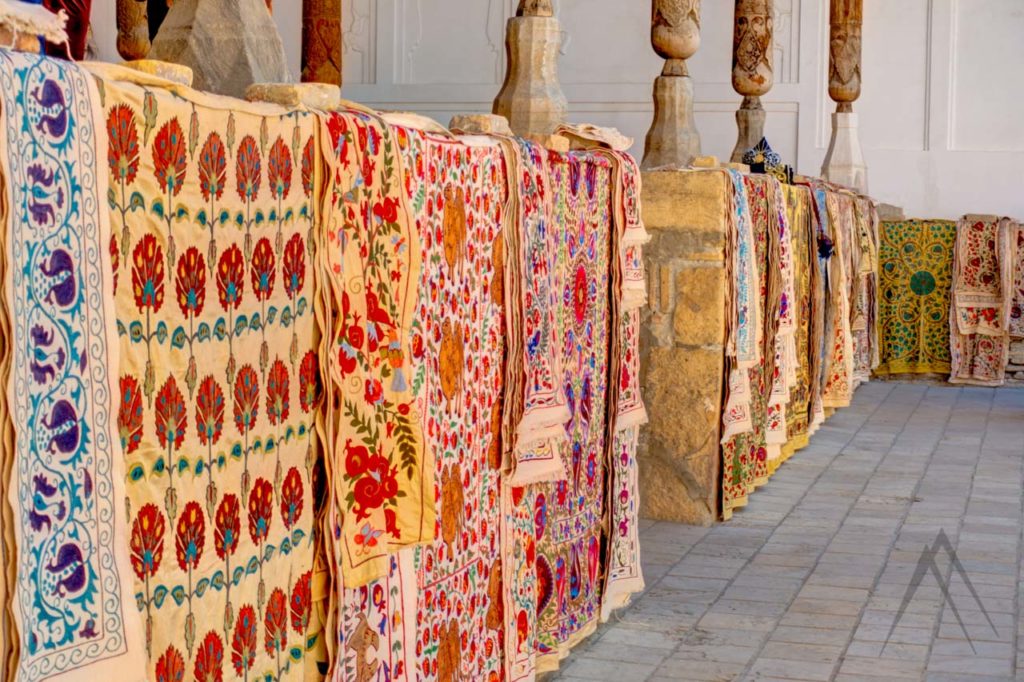Uzbek suzani
Suzani
Within the many remarkable traditions of Uzbek art, Suzani with its artistic design, takes a special place. Suzani (Suzanne) is a type of embroidered and ornamental tribal textile made in mostly in Uzbekistan but also in Tajikistan and Kazakhstan, as well as in other Central Asian countries. In Persian language, suzani means “sewn with a needle” which is a very accurate description as it is a decorative fabric, embroidered with silk or cotton threads of bright colors and a variety of exquisite patterns.
The oldest surviving suzanis are only from the late 18th and early 19th centuries and it is therefore told that this Uzbek needlework originates from the late 18th and early 19th centuries, but many believe that they were invented a lot before the that.
In the 15th century, the ambassador of Castile, Rui de Clavijo Gonzalez, who visited Tamerlane, compiled detailed descriptions of embroideries, which were probably the predecessors of Uzbek suzani. There are also definite similarities between the 18th century suzanis and the embroideries produced in Mughal India two centuries beforehand. The Mughals, of course, were Timurids and their founder Babur, a native of the Fergana Valley.

Suzani as bride's dowry
Uzbek suzani textiles were traditionally made by brides and their relatives, already from young age, as a part of their dowry and therefore suzani pillows, bedspreads, rugs and wall hangings have all been created by women’s hands. The methods of sewing and the ornaments of embroidery were transferred from mother to daughter, meaning that each family had their own style of decorative embroidery. The production of suzani, as a rule, took one or two years of effort from skilled workers.
Since ancient times, Uzbekistan suzani embroidery has always been present in every house, decorating the walls and serving as kind of amulets. The traditional patterns of embroidery were drawn with a sharpened straw called “kalam”. Skilled masters of the suzani trait knew many different styles of ornamentation and varied them to create new combinations, with carefully chosen colors of the silk.
Uzbek suzani patterns
As Uzbek Suzani has its very own distinctive style that has developed for centuries, it can be called a national art form of Uzbekistan. In the 19th century, Nurata, Bukhara, Samarkand, Shakhrisabz, Tashkent and Fergana became centers of this artistic embroidery. Popular design motifs in Uzbek suzanne include sun and moon disks, flowers (especially tulips, carnations, and irises), leaves and vines, fruits (especially pomegranates), and occasional fish and birds. Animals are still more rare due to the Islam belief rules that they should not be drawn in art. The three main stitches used in embroidering suzanis are chain, buttonhole and satin stitches.
But this all being said, it is actually impossible to find two pieces alike, in spite of the similar patterns and colors as the variety of ornaments and their combinations, a suzani is unique each time when it is made by hand and that is what the evolving art of Suzanne is based on.

More about Uzbek culture
Page updated 16.2.2022